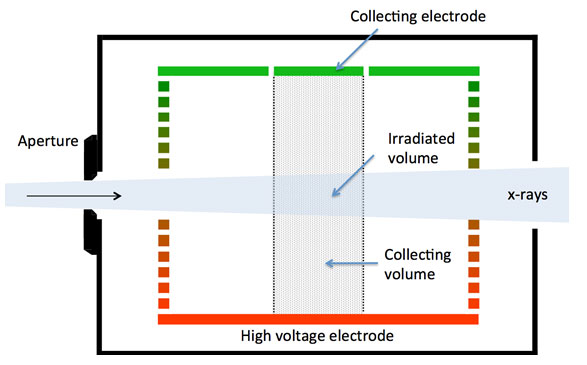The free air chamber is a standard of exposure, and is used as a standard of air kerma by using the energy required to create an ion pair in air: 33.97 J/C.
The free air chamber is an ionisation chamber without walls. Charge, Q, is collected from a volume of air defined by the radiation beam profile and the size of the collecting electrode. By using a uniform electric field, the volume V of air contributing to the collected charge is easily calculated. Exposure is the ratio Q/m where m is the mass of air in V.

Schematic of a free air chamber.
The MEFAC is designed to work in the region 30 – 300 kVp. The MEFAC can work at lower energies but the corrections for air attenuation, scatter and fluorescence become large, and hence the uncertainty in the measurement becomes large. For these energies a smaller chamber (the LEFAC) is used as the primary standard. At higher energies, the correction for electrons which escape the collection volume becomes large. In addition, transmission through the sides of the aperture starts to be important above about 250 keV.


